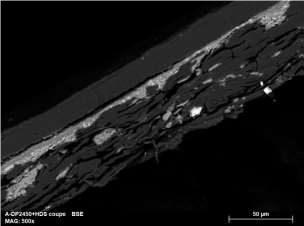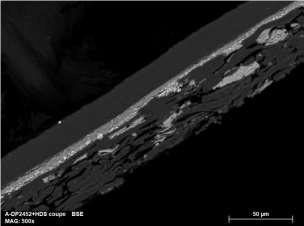
Biodegradable packaging with cellulose fibrils
Anni Karppinen | July 3, 2018
Cellulose-based materials, like paper and board, are commonly used in packaging. They are light-weight, durable, bio-based and easily recyclable which have made them a popular packaging material. However, paper and board lack the necessary barrier properties for food packaging and therefore an additional barrier layer is often added on the paper. Today, this layer is made from polymers, like polyethylene terephthalate or polyethylene, or aluminium. There are efforts to replace these materials with bio-based, biodegradable films in order to reduce the dependency on crude oil as well as reduce the impact on the environment.
A research project, SHERPACK, funded by the Bio Based Industries Joint Undertaking under the European Union’s Horizon 2020 research and innovation programme, is aiming to develop a recyclable and bio-based flexible packaging. One key component in that work is cellulose fibrils.
Producing the barrier layer
Cellulose fibrils offer an excellent bio-based, biodegradable grease and oxygen barrier when it is added on the paper (read also our earlier blog post on the oxygen barrier properties). However, it is quite different from the traditional barrier layers and requires new type of technology for applying it on the paper. Firstly, cellulose fibrils are produced as rather dilute water suspension (often 2-10% dry content). Moreover, producing a good, thin film requires often dilution of the suspension even further down to get even film. This can be challenging in the production since it means extensive dewatering and drying. Secondly, cellulose fibrils do not give moisture barrier and actually the oxygen barrier properties may go down in a humid environment. This means that some kind of protection against moisture is needed, for example multilayer structure containing moisture barrier.
Centre Technique du Papier (CTP), one of the partners in SHERPACK project, has invented a wet-lamination technology where a cellulose fibril layer can be laminated on a paper (patent application CTP/CNRS WO 2016174348 A1). In this process, the dilute cellulose fibril suspension is formed to film and dewatered up to 18% dry content and then laminated on paper before the final drying. The initial film forming and dewatering before the lamination on the paper makes the dewatering step easier since it does not occur through the paper. On the other hand, applying the cellulose fibril film as a wet layer on the paper facilitates the adhesion between the paper and cellulose fibrils without any glue or additives.
This technology was used for laminating cellulose fibrils (Exilva, Borregaard) on a 60 g/m2 paper (Gerstar HDS, Ahlstrom-Munksjö, a coated paper dedicated to packaging applications) as 20 g/m2 layer. Figure 1 shows how the laminated papers look in scanning electron microscope images. The dense cellulose fibril on the paper adheres well to the paper but the adhesion is somewhat dependent on the cellulose fibril quality (the black area on the left image shows some lack of adhesion). Cellulose fibrils also give a smooth surface for the paper.


Figure 1. Scanning electron microscope images of paper laminated with cellulose fibrils by wet lamination. The cellulose fibrils make a dense layer which develops excellent oxygen and oil barrier properties.
Oxygen transmission rate (OTR) was measured for the laminated papers at 50% humidity and 23 °C temperature. OTR is a crucial property for food packaging since removing oxygen inside the packaging prolongs the shelf-life of the food significantly. The cellulose fibril laminated papers had OTR values between 0.5 and 12.7 cm3/m2d which is well within the requirements for dry food. The oil barrier properties were tested with Cobb oil absorption test (60 s) for the base paper and laminated papers. The Cobb value went down from 3.6 g/m2 for the base paper to 0.1-0.4 g/m2 (depending slightly on the cellulose fibril quality). The wet lamination of the paper with cellulose fibrils gave sufficient oxygen and oil barrier properties for dry food applications.
Conclusions
Developing bio-based, biodegradable packaging is important both for reducing our dependency on crude oil as well as reducing the pollution of the environment. However, these goals should not sacrifice the properties of the packaging. High-quality food packaging is a key element for keeping the food fresh longer, thus reducing food waste and environmental footprint of food. Cellulose fibrils can provide excellent barrier properties for food packaging, as shown above, and contribute to the bio-based economy.
European project funded by the Bio Based Industries Joint Undertaking under the European Union’s Horizon 2020 research and innovation program under grant agreement N°745718.
Written by:
Anni Karppinen
